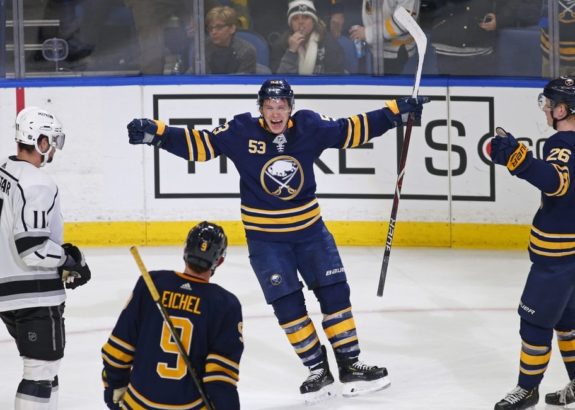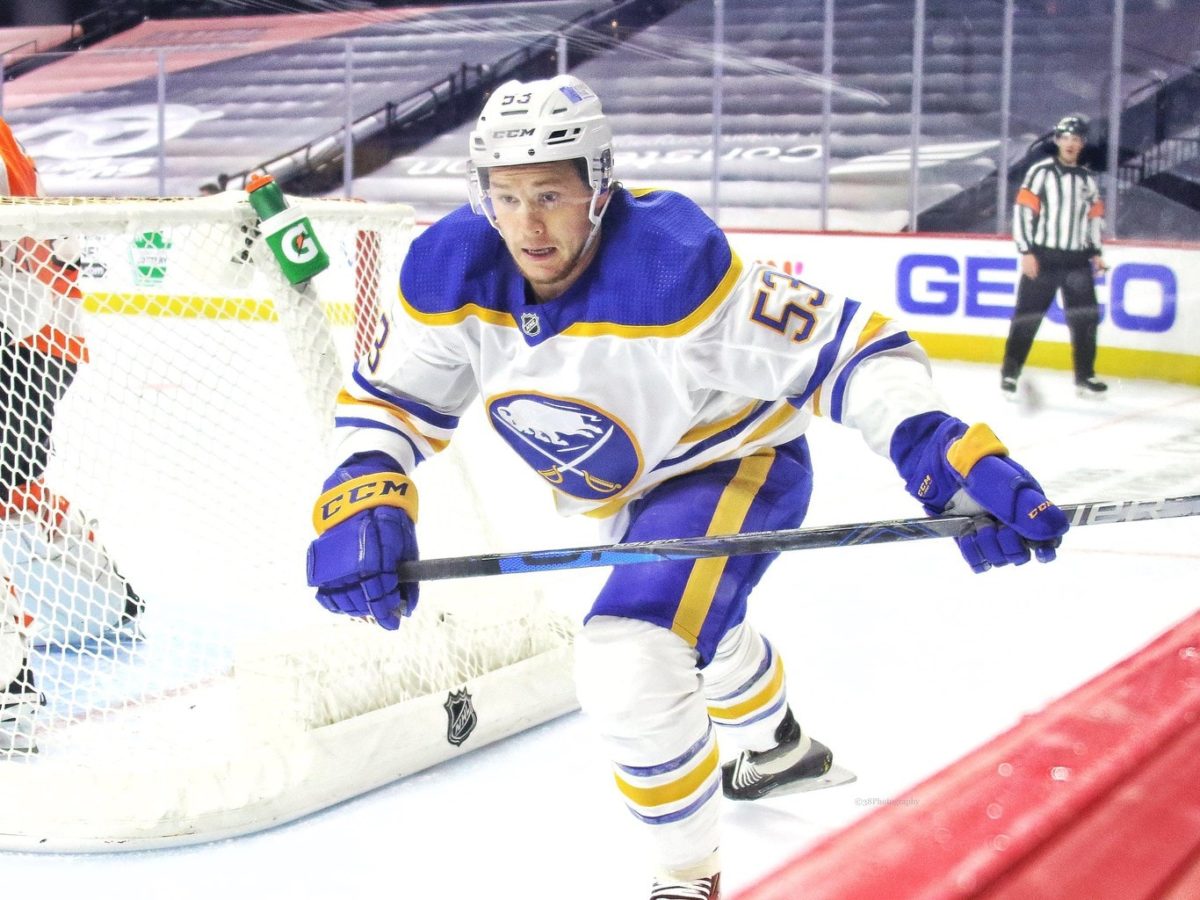If you enjoyed a morning coffee today in Mather Arch Park on the Canadian side of the Peace Bridge between Fort Erie, Ontario and Buffalo, New York, you might have heard a roar coming across the lake. No, it wasn’t Buffalonians having a late Fourth of July party. That cheer was because Buffalo Sabres’ forward Jeff Skinner has agreed to waive his no-movement clause (NMC) to be exposed in the Seattle expansion draft as per his agent, Don Meehan.
Immediately following the joyous celebration, some thoughtful reflection dawned upon most of the Sabres fans hoping to rid themselves of Skinners’ $9 million average annual value (AAV) through to 2027: no one else wants that deal either. He can waive all he wants, but it’s pointless if no one waives back. It’s reminiscent of this profanity-filled Youtube video.
However, Skinner agreeing to waive his NMC does allow Sabres’ general manager Kevyn Adams to protect another forward in the upcoming July 21 NHL Expansion Draft, meaning it’s more than likely all of Tage Thompson, Rasmus Asplund, and Anders Bjork remain with the club next year.

Skinner had only seven goals and 14 points in the 2021 campaign, playing 53 games mostly on the fourth line.
Sabres Protected List
Adams was likely thinking that if Meehan could convince Skinner to waive his NMC, it meant he could protect the younger players he wants to keep around for next season. The likelihood of the Kraken picking up Skinner and his mother-of-a-contract is pretty low. With this move — and keep in mind a trade could remove some of the following names — the Sabres protection list will probably look something like this (if they go with the 7-3-1 formula):
Forwards: Jack Eichel, Sam Reinhart, Casey Mittelstadt, Victor Olofsson, Tage Thompson, Anders Bjork and Rasmus Asplund.
Defense: Rasmus Dahlin, Henri Jokiharju, and Rasmus Ristolainen.
In goal, there is no choice but to expose Dustin Tokarski, the only goalie under contract to date.
Skinner waiving means much more for the Sabres’ protected list than it does for the potential to move him and get something in return. But Adams’ ultimate goal here doesn’t change, and that is to get out from under his contract.
What Buying Out Skinner Would Look Like
So how does he do that? Maybe there is a team out there with a bit of extra cap space who is willing to take a flier on a former top-six forward who might flourish in a new market. Maybe –and this is far-fetched — Adams can include him in an Eichel deal and make what will possibly be a poor return for the face of the franchise look a little better. Having options never hurts. I’d rank the likelihood of that last idea happening as a 3-out-of-10. Not impossible, but not likely.
Latest Sabres Content:
- Sabres Sign Ukko-Pekka Luukkonen to 5-Year Deal
- Buffalo Sabres’ Worst Trades Ever
- 3 Buffalo Sabres That Need to Step up in 2024-25
- 9 NHL Teams That Missed in Free Agency
- Top 3 Sabres With Underrated Fantasy Hockey Value For 2024-25
Another option to rid themselves of Skinner’s contract is the buyout. But the window for that is closing fast. NHL GMs are able to buy out players under contract 48-hours after the Stanley Cup is awarded and will continue to be able to do so until the day before the draft (July 27). With that in mind, here’s what buying out Skinner would look like.

To buy out Skinner, the Sabres would have to take on 2/3s of his remaining contract value, which equals out to $29,666,667. That means a savings of $14,833,333 and an annual cost of $2,472,222, according to CapFriendly’s Buyout Calculator (a pretty handy tool, check it out). The buyout will spread over twice the contract amount, meaning Skinner will carry a cap hit for the Sabres until 2033, but at a reduced, varying rate.
CapFriendly lays out the following steps for calculating the buyout cap hit in their Buyout FAQ section:
- Multiply the remaining salary (excluding signing bonuses) by the buyout amount (as determined by age) to obtain the total buyout cost
- Spread the total buyout cost evenly over twice the remaining contract years
- Determine the savings by subtracting the annual buyout cost from Step 2. by the player’s salary (excluding signing bonuses)
- Determine the remaining cap hit by subtracting the savings from Step 3. by the player’s Annual Average Salary (AAV) (including signing bonuses)
The above calculation is performed for each year of the buyout, meaning the buyout cap hit is not necessarily the same for each year. It is also possible that the buyout cap hit can be negative, meaning the team receives a credit.
Here comes a lot of numbers, so prepare yourself for some eye-test reading. Starting with the 2021-22 season, Skinner’s cap hit for the Sabres if they were to buy him out would be $1,472,222. In 2022-23 it would be $8,972,222. From 2023-2025 it would be $1,472,222, 2025-26: $4,472,222, 2026-27: $6,472,222 and finally, from 2027 through to 2033 it would $2,472,222.
Sticking it Out
Unless Adams can find a new home for Skinner or opts for the buyout route, Skinner will stick it out with the Sabres for at least one more year. The GM is likely to try and trade him this offseason, and those negotiations could stretch past the July 27 deadline. A buyout might make more sense in later years.
The Sabres not tracking to be up against the cap (especially if they trade Eichel) anytime soon. However, their current $34 million-plus in cap space is deceiving since, as mentioned, they have yet to sign a number one goalie or a slew of restricted and unrestricted free agents, including Reinhart, Asplund, Mittelstadt, Dahlin, Jokiharju and William Borgen.
The summer of fun continues for GM Adams as he tries to right the Blue and Gold ship and set it on a course for continued success.